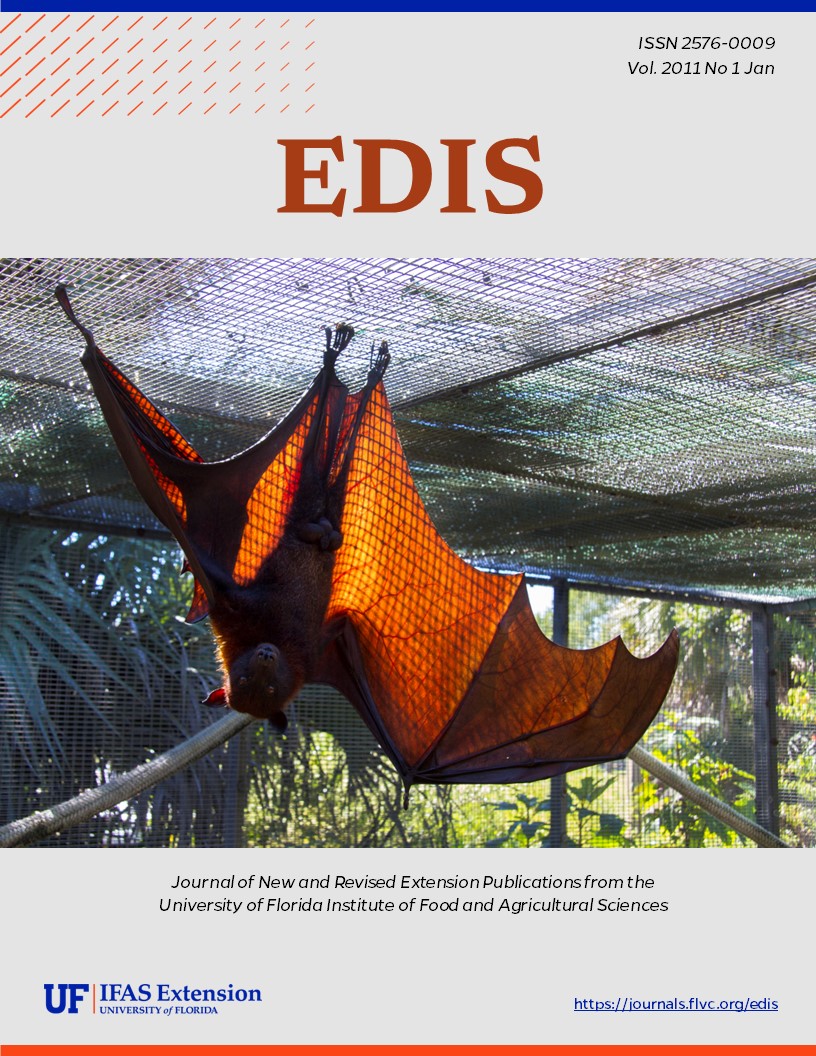Abstract
FOR276, a 5-page fact sheet by Jason A. Smith and Aaron Trulock, suggests a new understanding of the cause of decline and discusses current efforts to assess the population and develop a recovery plan. Includes references. Published by the UF Department of School of Forest Resources and Conservation, November 2010.
References
Alfieri, S. A., A. P. Martinez, and C. Wehlburg. 1967. Stem and needle blight of Florida torreya, Torreya taxifolia Arn. Proceedings Florida State Horticultural Society 80:428-431.
Alfieri, S. A, C. L. Schoulties, K. R. Langdon, and N. E. El-Gholl. 1987. Leaf and stem disease of Torreya taxifolia in Florida. Florida Dept. Agric. & Consumer Serv. Plant Pathology Circular No. 291.
Baker, W. and S. Leonard. 1982. A distribution survey of Taxus floridana and Torreya taxifolia in Florida. Unpublished report. U.S. Fish and Wildlife Service.
Barnes, L. 1983. Morphology of Torreya taxifolia Arn. Dept. of Ornamental Hort. Univ. of Florida, Gainesville.
Burns, R. M., and B. H. Honkala, tech. coords. 1990. Silvics of North America: 1. Conifers; 2. Hardwoods. Agriculture Handbook 654. U.S. Department of Agriculture, Forest Service, Washington, DC. vol.2, 877 p.
El-Gholl, N. E. 1985. Fusarium lateritium causing needle spots on Torreya taxifolia in Florida. Plant Disease 69: 905. https://doi.org/10.1094/PD-69-905a
Farjon, A. 2010. A handbook of the world's conifers. Brill Academic Publishing. Leiden, The Netherlands. 1112 pp. https://doi.org/10.1163/9789047430629
Godfrey, R. K. and H. Kurz. 1962. The Florida torreya destined for extinction. Science. 136:900-902. https://doi.org/10.1126/science.136.3519.900.b
Lee, J. C., Y. Xianshu, M. W. Schwartz, G. Strobel, and J. Clardy. 1995. The relationship between an endangered North American tree and endophytic fungus. Chemistry & Biology 2:721-727. https://doi.org/10.1016/1074-5521(95)90100-0
Schwartz, M. W. and S. M. Hermann. 1993. The continuing population decline of Torreya taxifolia Arn. Bulletin of the Torrey Botanical Club 120 (3), 275-286. https://doi.org/10.2307/2996992
Schwartz, M. W., S. M. Hermann, and C. Vogel. 1995. The catastrophic loss of Torreya taxifolia: assessing environmental induction of disease hypotheses. Ecological Applications 5, 501-516. https://doi.org/10.2307/1942039
Schwartz, M. W., S. M. Hermann, and P. J. van Mantgem. 2000. Population persistence in Florida torreya: Comparing modeled projections of a declining coniferous tree. Conservation Biology 14: 1023-1033. https://doi.org/10.1046/j.1523-1739.2000.98393.x
Schwartz, M. W. 2005. Conservationists should not move Torreya taxifolia. Wild Earth 14:72-79.
Sinclair, W. A., H. H. Lyon, and W. T. Johnson. 2005. Diseases of trees and shrubs, 2nd Edition. Cornell University Press, Ithaca, New York. 574 pp.
Spector, T. 2009. Florida Park Service Management Plan for Torreya taxifolia and Taxus floridana. Florida Park Service, May, 2009.
Spector, T. 2010. Florida Department of Environmental Protection, May, 2010. Personal communication.
Stalter, R. and S. Dial. 1984. Environmental status of the stinking cedar, Torreya taxifolia. Bartonia 50: 40-42
USFWS (United States Fish and Wildlife Service) 1984. Endangered and threatened wildlife and plants: final rule to determine Torreya taxifolia (Florida torreya) to be an endangered species. Federal Register 49(2783-2786).
USFWS (United States Fish and Wildlife Service) 1986. Florida torreya Torreya taxifolia recovery plan. U.S. Fish and Wildlife Service, Atlanta, GA.

